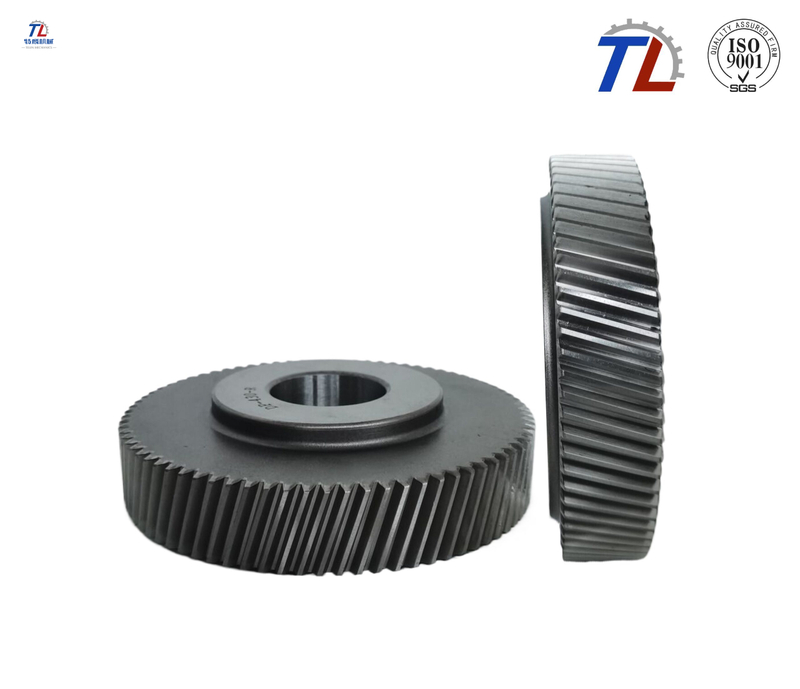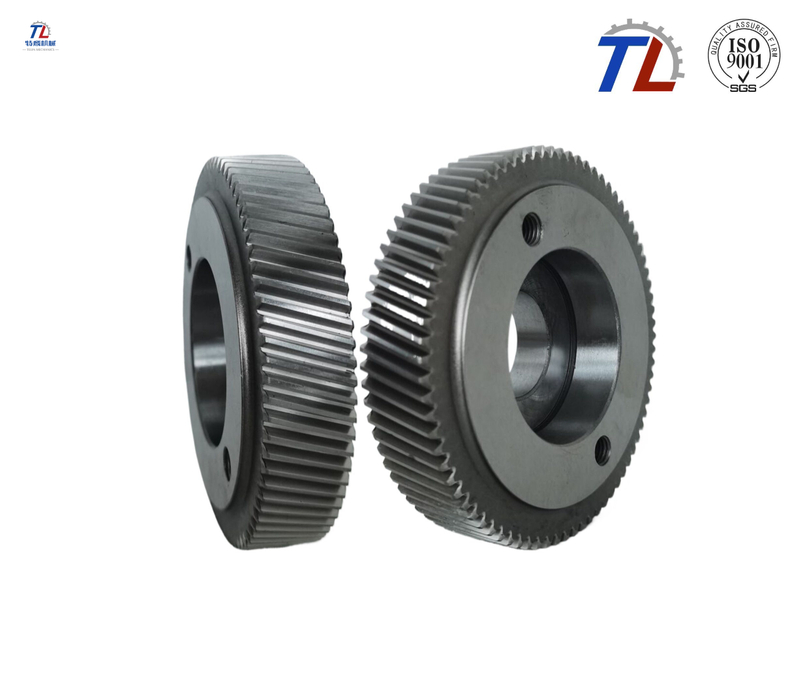- All
- Product Name
- Product Keyword
- Product Model
- Product Summary
- Product Description
- Multi Field Search
Views: 0 Author: Site Editor Publish Time: 2025-07-15 Origin: Site









When it comes to efficient power transmission in mechanical systems, bevel gears are often the unsung heroes. These gears, with their conical shape and ability to change direction, are fundamental to many high-performance applications, especially in machinery and automotive systems. But what exactly makes bevel gears so essential, and why are they preferred over other types of gears like spur or helical gears?
In this post, we’ll dive into the advantages of using bevel gears, explore how they compare to spur and helical gears, and examine why they are a top choice for various industries. By the end of this article, you will have a better understanding of why bevel gears are indispensable and how they can improve your machinery’s performance.

Bevel gears are a type of gear that features conical teeth, typically designed to transmit power between shafts that are at an angle, most commonly 90 degrees. Unlike spur gears, which have straight teeth and are mounted parallel, bevel gears are perfect for applications where the direction of the shaft needs to be changed.
There are several types of bevel gears, including straight bevel gears, spiral bevel gears, and hypoid bevel gears, each offering unique characteristics and advantages for specific applications.
Bevel gears provide several distinct advantages that make them a popular choice in industries ranging from automotive to aerospace. Let’s explore the key benefits of bevel gears in more detail.
One of the primary advantages of bevel gears is their ability to transfer power efficiently at right angles. Bevel gears have teeth that mesh smoothly, ensuring minimal friction and wear during operation. This results in high efficiency, especially in systems where torque needs to be transferred at an angle. For example, bevel gears are often used in differential drives in vehicles, where power needs to be split between two wheels, and in various machines that require precision power transmission.
Bevel gears are highly versatile, allowing for flexibility in how they are used within mechanical systems. They come in various shapes, such as straight teeth (for high torque applications) and spiral teeth (for quieter and smoother operation). This design flexibility makes bevel gears adaptable for use in a wide range of applications.
For instance, spiral bevel gears are known for their smooth and quiet operation, making them ideal for automotive drive systems, while straight bevel gears are often used in applications requiring heavy loads but are less concerned with noise reduction.
Bevel gears, especially spiral bevel gears, are known for their high load-bearing capacity. The angle at which the teeth mesh allows for more teeth to come into contact at any given time, distributing the load more evenly and reducing the risk of failure under high loads. This makes bevel gears highly suitable for heavy-duty applications such as in power transmission systems and industrial machinery.
Compared to other types of gears like helical or spur gears, bevel gears can be designed to operate within a compact space. Their conical shape allows them to be mounted at a right angle, effectively saving space in the machinery where they are used. This space-saving feature makes bevel gears an excellent choice for applications where compactness is essential, such as in automotive drive systems or in machinery with limited space for power transmission.
Spiral bevel gears, in particular, are known for their smooth operation and low noise levels. The curved teeth of spiral bevel gears make gradual contact during meshing, resulting in less vibration and a quieter performance compared to straight bevel gears. This is crucial for applications where noise reduction is important, such as in automotive systems and industrial machinery.
Bevel gears are built to last, especially when manufactured from high-quality materials such as alloy steels. Their ability to distribute the load evenly reduces stress on individual teeth, contributing to longer operational lifespans. Spiral bevel gears, in particular, are designed for high-speed applications and are often used in systems that require continuous operation, such as wind turbines and precision machine tools.
Another unique advantage of bevel gears is their ability to transmit high torque while changing the direction of rotation. This feature is particularly important in systems where the shafts are not aligned and where there is a need to adjust the direction of power transmission. Bevel gears can accommodate a wide range of angles, making them versatile for different configurations in complex machinery.

While bevel gears offer a range of benefits, it’s important to compare them to other popular types of gears, such as spur and helical gears, to understand their relative advantages.
Spur gears have straight teeth and are mounted on parallel shafts. They are simple in design and effective in transmitting power in a single direction. However, they are typically louder and less efficient when used in applications that require a change in direction, unlike bevel gears.
Bevel gears, on the other hand, are designed to operate at angles, making them ideal for systems where the direction of power transmission needs to change. While spur gears are suitable for simpler, straightforward applications, bevel gears are better suited for more complex systems where angular adjustment is needed.
Helical gears have teeth cut at an angle to the axis, which allows for smoother engagement than spur gears. However, they are typically used for parallel shafts, unlike bevel gears, which are designed for intersecting shafts. Helical gears are quieter and more efficient than spur gears, but bevel gears are more versatile in terms of direction change and load handling.
Spiral bevel gears, a subtype of bevel gears, are even smoother and quieter than helical gears, making them ideal for high-performance applications such as in vehicles and industrial machines.
Bevel gears offer unmatched advantages when precision, efficiency, and durability are required. Whether you're working on automotive systems, heavy-duty industrial machinery, or any other application that requires a change in direction and high torque transmission, bevel gears can deliver superior performance.
At Guangzhou Telin Machinery Parts Co., we specialize in providing high-quality bevel gears, designed to meet the specific needs of your projects. With our commitment to precision and reliability, we ensure that your machinery operates efficiently and smoothly.
In conclusion, bevel gears stand out for their versatility, high load capacity, space-saving design, and ability to transmit power efficiently at different angles. When compared to spur and helical gears, bevel gears excel in applications where the direction of rotation needs to be changed or where high torque is required. Whether you are working on a complex automotive system or an industrial machine, bevel gears offer a reliable and long-lasting solution. For those seeking high-quality bevel gears, Guangzhou Telin Machinery Parts Co. is your trusted partner for superior gearsolutions.
A: Bevel gears are designed to transmit power between shafts that are at an angle, whereas spur gears are used for parallel shafts. Bevel gears are essential when direction change is needed, making them more versatile than spur gears.
A: Bevel gears can be more efficient when power needs to be transmitted at different angles. Helical gears are efficient for parallel shafts, but bevel gears excel in applications requiring direction change and high torque.
A: Yes, bevel gears, especially spiral bevel gears, are known for their high load-bearing capacity and ability to handle heavy torque, making them ideal for demanding applications.
A: Spiral bevel gears have curved teeth, allowing for gradual engagement, which reduces noise and vibration compared to the sudden engagement of straight bevel gear teeth.
A: Bevel gears are highly durable, especially when made from quality materials like alloy steels. Their longevity is due to their ability to distribute load evenly, reducing wear and tear during operation.